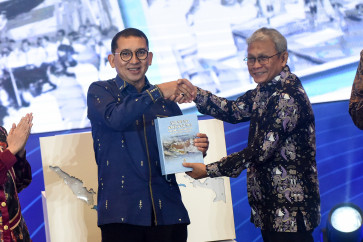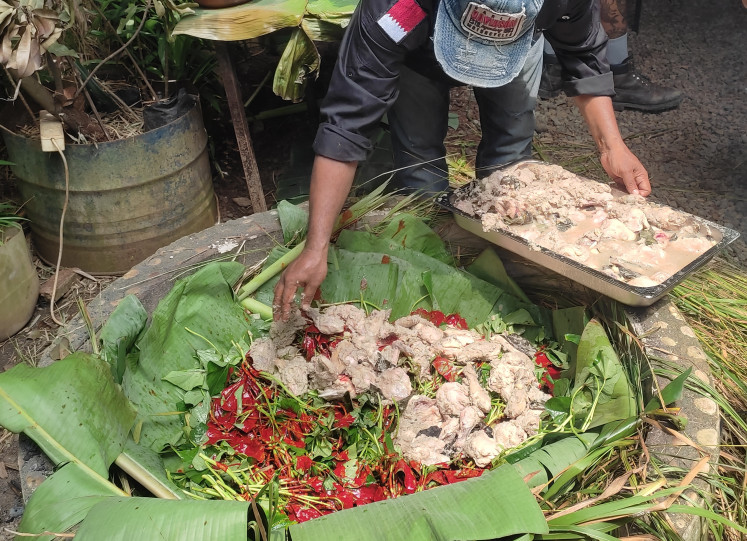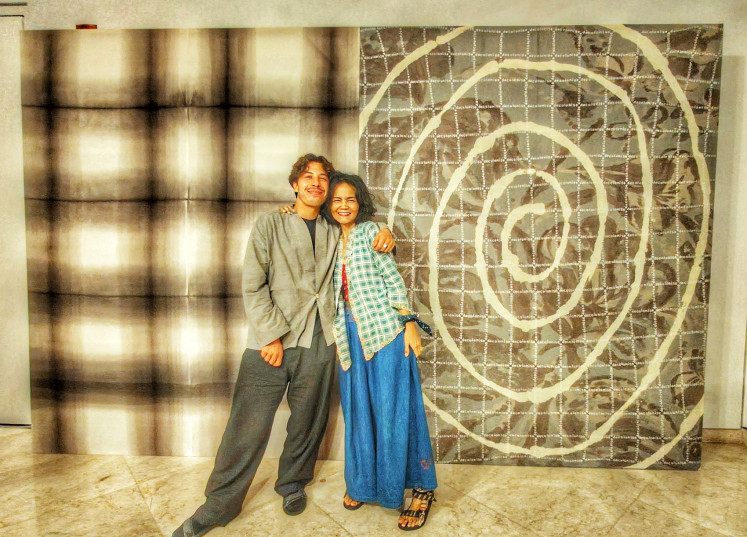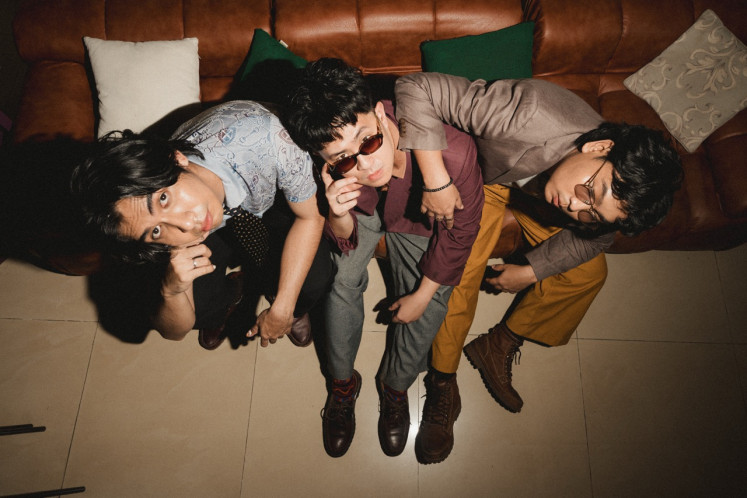Popular Reads
Top Results
Can't find what you're looking for?
View all search resultsPopular Reads
Top Results
Can't find what you're looking for?
View all search resultsFrom scripture to stage: The journey of 'I La Galigo'
The long awaited I La Galigo performance in Jakarta is approaching. Slated for July 3, 5, 6 and 7, the theatrical production is one with a long and interesting history behind it.
Change text size
Gift Premium Articles
to Anyone
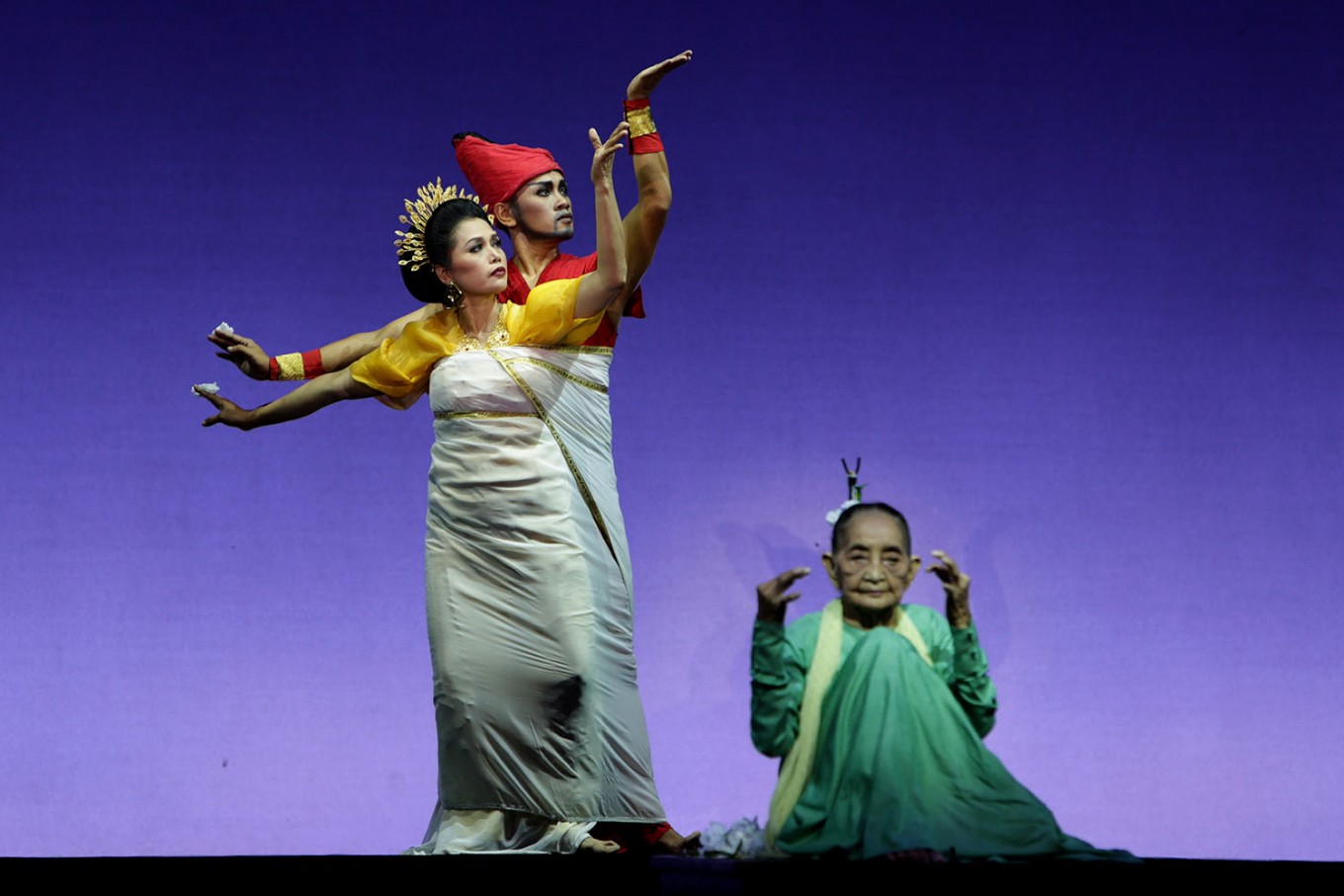 Dancers perform South Sulawesi’s ancient literary epic I La Galigo directed by Robert Wilson at Peninsula Island on the sidelines of the 2018 Annual Meetings of the International Monetary Fund and World Bank Group in Nusa Dua, Bali, on Wednesday. I La Galigo, which tells the story of the journey of Sawerigading, the crown prince of Luwu, was performed to entertain participants of the IMF-WB meetings. JP/Wendra Ajistyatama (JP/Wendra Ajistyatama)
Dancers perform South Sulawesi’s ancient literary epic I La Galigo directed by Robert Wilson at Peninsula Island on the sidelines of the 2018 Annual Meetings of the International Monetary Fund and World Bank Group in Nusa Dua, Bali, on Wednesday. I La Galigo, which tells the story of the journey of Sawerigading, the crown prince of Luwu, was performed to entertain participants of the IMF-WB meetings. JP/Wendra Ajistyatama (JP/Wendra Ajistyatama)
T
he long awaited I La Galigo performance in Jakarta is approaching. Slated for July 3, 5, 6 and 7, the theatrical production is one with a long and interesting history behind it.
From adapting the poem to receiving blessings from Bugis elders, the journey of I La Galigo is one you’d want to hear about.
The story of I La Galigo was lifted from the epic poem Sureq Galigo - an integral myths in the traditions of the indigenous Bugis people. Over centuries, the ancient text came close to disappearing as fragments of its written documentation spread around the world and oral tradition slowly faded away.
Helping to prevent the disappearance were the efforts of Rhoda Grauer and her journey to piece together I La Galigo.
Grauer’s interest in the epic first piqued after hearing about Sureq Galigo in the late 1990s during a research trip for a film about the bissu, genderless figures who dedicate themselves as priests, shamans, sorcerers and mediums among Bugis society.
At the time, Sureq Galigo only existed in two forms – in the memories of the Bugis people and as a 6,000-page manuscript written in the ancient Bugis tongue, pages of which were scattered among private collectors and in museums abroad. Though Grauer also found a 1,000-page summary in Dutch, much of the story had been omitted or simplified.
Grauer wanted to read Sureq Galigo in its entirety but first had to find missing pieces and overcome a language barrier between an archaic tongue that few still spoke at all. To further complicate things, Grauer hailed from New York and barely spoke Indonesian – so she sought the help of Galigo experts from Indonesia and even abroad.
Those who are familiar with Galigo shared their knowledge of the epic poem with Grauer – allowing her to slowly piece together details that deepen the lore of Sureq Galigo. Grauer was graciously given English summaries of certain acts. Some historians even shared their research papers and invited her to academic meetings where she could meet with other experts in the field.
The course of her journey took a turn when she was introduced to the late M. Salim, a man who can read the ancient Bugis language as well as the most prominent translator for Sureq Galigo. Salim said there were fewer than 100 people in South Sulawesi who could still read ancient manuscripts, and he agreed to help Grauer in digging deeper into Sureq Galigo and later became the cultural adviser for the play.
Eventually, the poem was adapted into text, and along the way, the idea to adapt it into a theater production was born.
Salim invited Restu I. Kusumaningrum, artistic director of the Bali Purnati Foundation, onto the project, and the theater production was closer to being realized .
Read also: Behind the stage: 5 facts you need to know about 'I La Galigo' before watching
The spiritual value of Sureq Galigo to the Bugis people cannot be understated, and respecting the source material would mean getting the blessings of the Bugis people and their ancestors for the project – a fact that Restu’s father would constantly remind her of.
On March 2001, Restu traveled to Cerekang and Malili to meet with the elders of Luwuq, an ancient South Sulawesi kingdom from where Sureq Galigo originates from. Restu and Rhoda embarked on their journey with a young cultural leader from Luwuq.
Luwuq is considered to be the birthplace of Bugis culture. An eight-hour journey brought them to the palace where the king of Luwuq’s descendants lived. There they met the Luwuq elders who happily gave I La Galigo their blessings. The elders even said, "We have been waiting for you."
It was here that the preparations for the production were set in motion with Restu, and Salim appointed Robert Wilson to serve as its director.
Restu then collaborated with three extraordinary partners she met during the trip that sculpted I La Galigo into the spectacle it is today. They are the late dance masters Ida Joesoef Madjid and Andi Ummu Tunru, who each managed a dance studio in South Sulawesi, and composer Rahayu Supanggah from Surakarta, Central Java.
During three years of preparation, the team continued to explore South Sulawesi, from Luwuq to Makassar, to find a cast.
A long and tiring journey eventually led the ensemble to I La Galigo’s theatrical premiere at the Esplanade Theaters on the Bay in Singapore, instilling the pride of Bugis’ cultural wealth within the young artists as they perform on a global stage.
This July, I La Galigo returns to where it started – right here in Indonesia. (ayr/mut)




